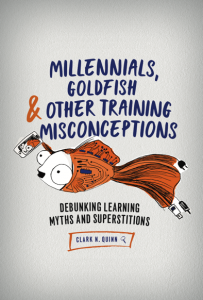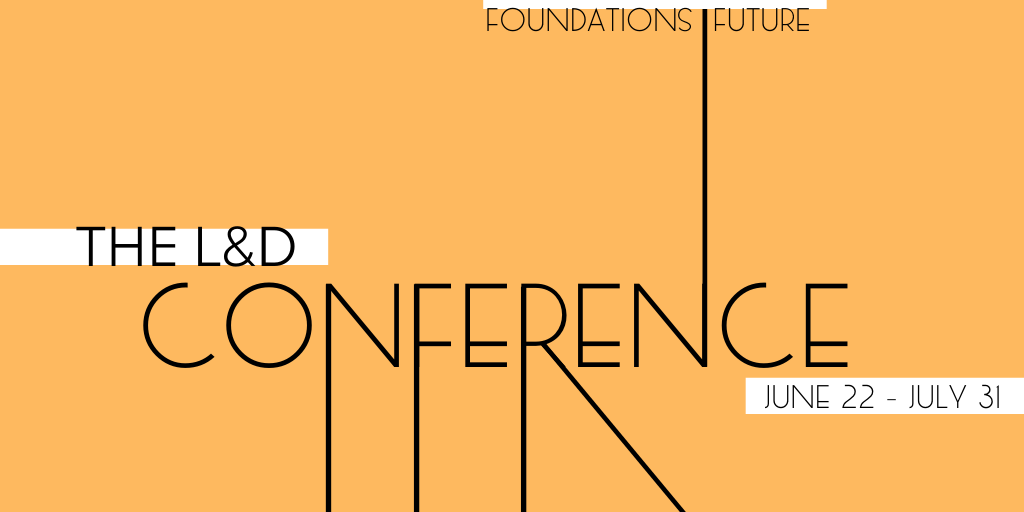 So, after that mess on Twitter, I next see on LinkedIn a recognized personage who proceeds to claim that learning styles are legit, and promises a post (see tomorrow’s review). And, the basis for this claim is fundamentally wrong. So I’m beginning to fear that we’re losing our collective minds! Let me be clear about the claim, the problem, and a healthy approach.
So, after that mess on Twitter, I next see on LinkedIn a recognized personage who proceeds to claim that learning styles are legit, and promises a post (see tomorrow’s review). And, the basis for this claim is fundamentally wrong. So I’m beginning to fear that we’re losing our collective minds! Let me be clear about the claim, the problem, and a healthy approach.
The claim started like this:
I know there is a huge camp of folks who say no one has learning styles and they provide all types of links of others who concur. Then there are folks who say they do exist, and change of a period of time (as you age). And you may have more than one.
I admit I am in the latter group, because I have seen it first-hand as a Director of Training, and when I taught at the HS and University levels.
And, this is a problem, because it misrepresents what’s going on. My response was:
Sure, learners differ, no one who’s taught can say otherwise. But, identifying how they differ, reliably? Er, no. And that we should adapt to learning styles? Again, not what research says. And, to be clear about the ‘huge camp’ (why would that be?), we don’t post links to others who concur, we post links to the science that shows that the instruments to measure styles aren’t psychometrically valid and that the evidence shows no benefit to adapting to learning styles. A waste of time and money.
When called out, the response was similar:
You have perspective, I respectfully disagree.
What this response did was suggest that it’s about opinion. Which is not just irritating, but it’s dangerously wrong. I’ve argued before about why myths matter. And, here, specifically, learning styles can cause you to waste money, but more importantly it may have people prematurely limit themselves. To their detriment.
But it’s also the refusal to acknowledge that it’s science, not opinion. Saying, basically, that the folks against learning styles support each other is very different, and wrong. We don’t point to each other, we point to the research!
It gets worse. The commentary on the post went sideways. Despite some apt questions about the legitimacy, there were counter opinions. One comment brought in neuro-linguistic programming! (Debunked, by the way.) It’d be funny if it weren’t so scary!
And, then, the followup, I have ‘perspective’. Sorry, but it’s not about your opinion versus mine. That may work for fashion, art, cinema. Not what we do in medicine, hazardous material, construction, flight, and the like. Even traffic! We follow what’s been demonstrated to save lives (or we should). When we get into the absurd situation of saying your anecdotal evidence is better than the weight of scientific evidence, we’re on a slippery slope to losing our collective minds.
Look, you can prefer vanilla to chocolate. You can like pineapple on your pizza. Or even put ketchup on your hotdog. (Quelle horreur!) I can differ. No one’s hurt. But if you yell ‘fire’ in a crowded theatre, or advise consuming disinfectant as a virus cure, or using nuclear waste as a skin lotion, you’re violating what’s known. And it’s wrong, if not outright illegal.
Please, be skeptical. Even of what I say! (The scientific method does have its flaws, but it’s better than everything else.) But please value controlled studies over anecdotes. There are lots of ways we can be misled by the latter. We don’t want to be losing our collective minds, we should be leveraging them. Please help!


